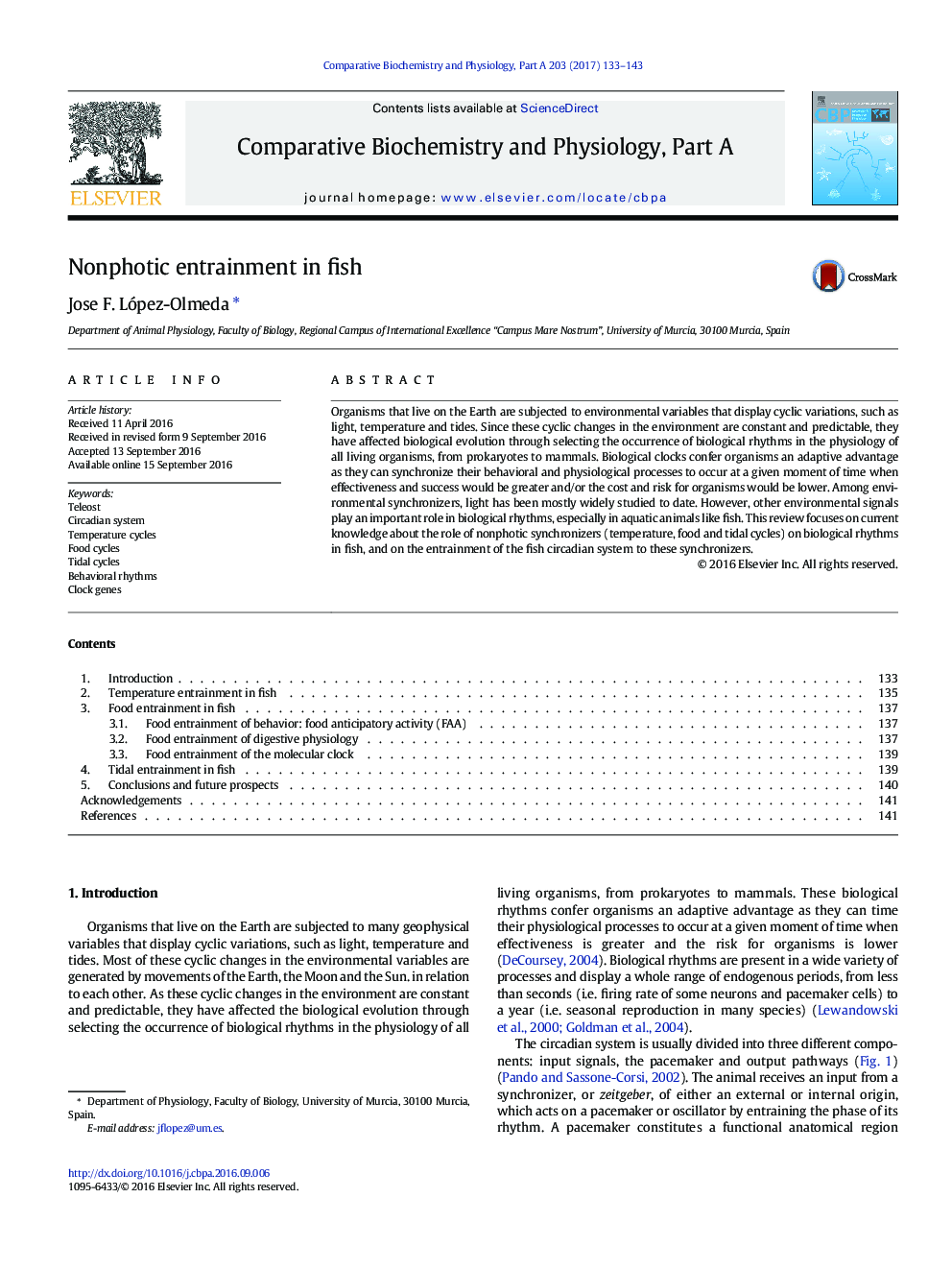| Article ID | Journal | Published Year | Pages | File Type |
|---|---|---|---|---|
| 8318341 | Comparative Biochemistry and Physiology Part A: Molecular & Integrative Physiology | 2017 | 11 Pages |
Abstract
Organisms that live on the Earth are subjected to environmental variables that display cyclic variations, such as light, temperature and tides. Since these cyclic changes in the environment are constant and predictable, they have affected biological evolution through selecting the occurrence of biological rhythms in the physiology of all living organisms, from prokaryotes to mammals. Biological clocks confer organisms an adaptive advantage as they can synchronize their behavioral and physiological processes to occur at a given moment of time when effectiveness and success would be greater and/or the cost and risk for organisms would be lower. Among environmental synchronizers, light has been mostly widely studied to date. However, other environmental signals play an important role in biological rhythms, especially in aquatic animals like fish. This review focuses on current knowledge about the role of nonphotic synchronizers (temperature, food and tidal cycles) on biological rhythms in fish, and on the entrainment of the fish circadian system to these synchronizers.
Related Topics
Life Sciences
Biochemistry, Genetics and Molecular Biology
Biochemistry
Authors
Jose F. López-Olmeda,
